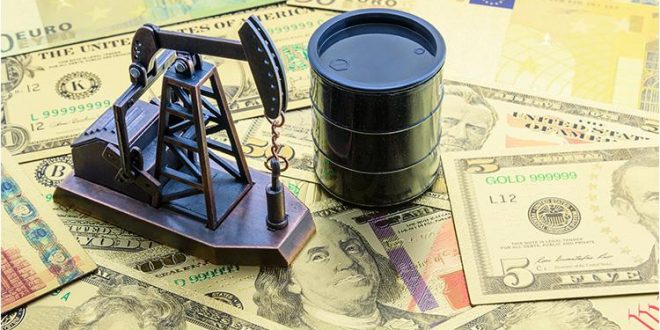Oil prices rose on Monday, recovering from a seven-day losing streak as investors hunted for bargains and a softer dollar lent support, though persistent anxiety over surging cases of the Delta coronavirus variant kept sentiment cautious.
Brent crude futures climbed $1.16, or 1.8%, to $66.34 a barrel by 6.30am, after hitting the lowest level since May 21 of $64.60 earlier in the session.
US West Texas Intermediate (WTI) crude futures for October rose $1.07, or 1.7%, to $63.21 a barrel, recovering from $61.74, the lowest since May 21, touched in Asia’s early trade.
Both benchmarks marked their biggest week of losses in more than nine months last week — Brent slid about 8% and WTI fell about 9% — as markets braced for weakened fuel demand worldwide due to the surge in the pandemic.
“Oil prices took a breather [on Monday] after their steep drops last week,” said Kazuhiko Saito, chief analyst at Fujitomi Securities.
“We expect to see more adjustments this week, but the market sentiment is likely to remain bearish with growing concerns over slower fuel demand worldwide,” he added.
Numerous nations worldwide are responding to the rising coronavirus infection rate, triggered by the highly transmissible Delta variant, by adding travel restrictions to curb the spread.
China, the world’s largest crude oil importer, has imposed new restrictions with its “zero tolerance” coronavirus policy, which is affecting shipping and global supply chains. The US and China have also imposed flight-capacity restrictions.
While the pandemic drags on fuel demand, supply is steadily increasing. US production rose to 11.4-million barrels per day in the most recent week, and drilling firms added rigs for the third week in a row, services company Baker Hughes said.
But a slide in the US dollar provided some support.
“A softer dollar prompted investors to rewind their positions,” said Chiyoki Chen, chief analyst at Sunward Trading.
The dollar index, which measures the currency against six peers, traded at 93.333, down slightly from 93.734, its highest in more than nine months hit on Friday. Oil prices move inversely to the US currency, making oil less expensive for foreign purchasers when the dollar falls.
Investors also wanted to adjust their positions ahead of the Federal Reserve’s annual Jackson Hole, Wyoming symposium on Friday, Chen said.
The pandemic surge prompted the Fed to move the symposium to an online format, raising questions about the central bank’s broader assessment of the Delta variant’s economic impact as it inches towards tapering stimulus.

 Iran Energy News Oil, Gas, Petrochemical and Energy Field Specialized Channel
Iran Energy News Oil, Gas, Petrochemical and Energy Field Specialized Channel



